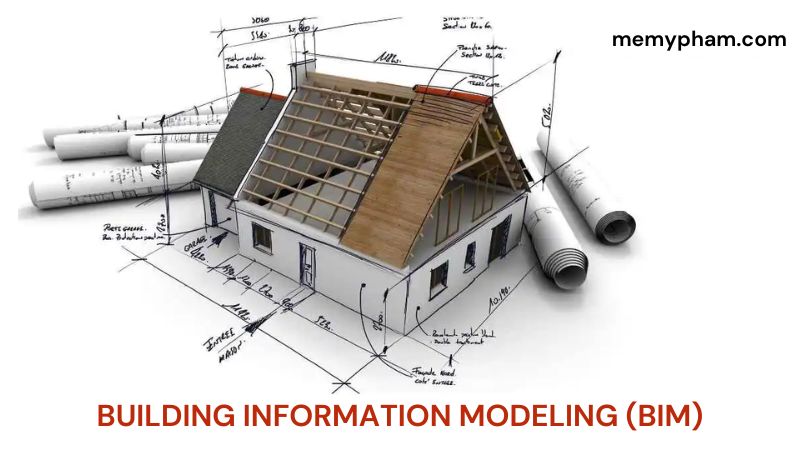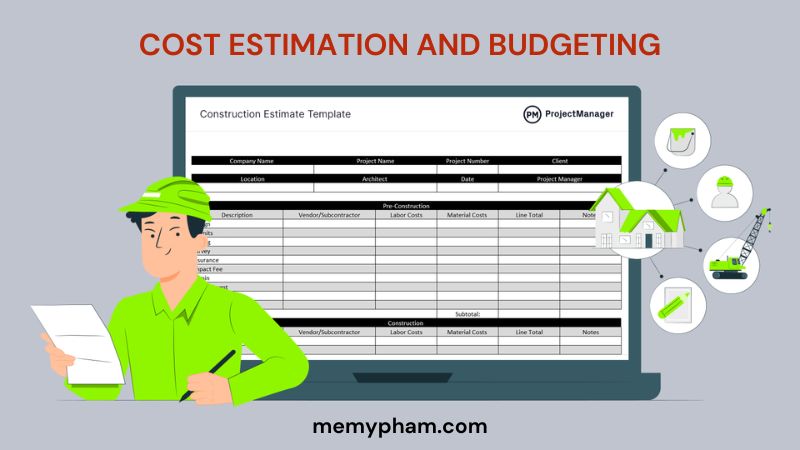In the dynamic landscape of modern construction, the integration of technology has become paramount for efficiency, precision, and collaboration. Design software for construction stands at the forefront of this revolution, offering a comprehensive suite of tools tailored to meet the diverse needs of architects, engineers, contractors, and project managers. This article by Memypham delves into the multifaceted functionalities of such software, elucidating its pivotal role in shaping the future of construction management.
Design Software for Construction
1. Building Information Modeling (BIM): Transforming Architectural Design
At the core of design software for construction lies Building Information Modeling (BIM), a transformative approach that enables stakeholders to create and manage digital representations of building projects. With BIM, design software transcends traditional 2D drafting, offering immersive 3D modeling capabilities that foster enhanced visualization and spatial understanding. Architects and engineers leverage BIM to conceptualize intricate designs, simulate construction processes, and optimize building performance, thereby laying the foundation for informed decision-making throughout the project lifecycle.

2. Efficient Project Planning and Scheduling
Beyond its architectural prowess, design software for construction encompasses a myriad of features designed to orchestrate seamless project planning and execution. Robust project planning and scheduling modules empower stakeholders to meticulously chart project timelines, allocate resources, and synchronize workflows with pinpoint precision. By amalgamating BIM models with project schedules, stakeholders gain unparalleled insight into project phasing, resource dependencies, and critical path analysis, fostering synergy and efficiency across disparate project teams.
3. Cost Estimation and Budgeting: Ensuring Financial Transparency
Cost estimation and budgeting represent another cornerstone of design software for construction, providing stakeholders with indispensable tools for financial transparency and accountability. Through sophisticated algorithms and comprehensive databases, stakeholders can generate accurate estimates of material costs, labor expenses, and overhead expenditures, thereby mitigating the risk of budget overruns and fostering fiscal prudence. Real-time cost tracking and variance analysis further empower stakeholders to monitor project expenditures, identify cost-saving opportunities, and optimize budget allocations throughout the construction lifecycle.

4. Streamlined Document Management
Central to the efficacy of design software for construction is its robust document management capabilities, which serve as the digital backbone for collaboration and knowledge dissemination. By centralizing project documentation, including drawings, contracts, and specifications, stakeholders can effortlessly navigate the complex web of project information, thereby fostering transparency, accountability, and regulatory compliance. Version control mechanisms further safeguard against discrepancies and facilitate seamless collaboration across distributed project teams, ensuring that stakeholders are equipped with the most up-to-date information at all times.
5. Facilitating Collaboration and Communication
In an era defined by interconnectedness and real-time communication, design software for construction serves as a catalyst for collaboration, facilitating seamless interaction and information exchange among project stakeholders. Real-time messaging, comments, and notifications engender a culture of open communication, enabling stakeholders to swiftly address issues, solicit feedback, and resolve conflicts in a collaborative manner. By fostering a cohesive and transparent communication ecosystem, design software for construction fosters synergy and cohesion across disparate project teams, thereby driving efficiency and mitigating project risks.
6. Ensuring Quality Control and Inspection
Quality control and inspection represent pivotal facets of construction management, underscoring the imperative of delivering projects that adhere to stringent quality standards and regulatory requirements. Design software for construction incorporates robust quality control modules, comprising checklists, workflows, and inspection protocols, that empower stakeholders to systematically assess and monitor project quality throughout every phase of the construction lifecycle. Mobile applications further facilitate on-site inspections and reporting, enabling stakeholders to capture real-time data, document observations, and expedite remedial actions with unparalleled efficiency and precision.
7. Optimizing Resource Management
Efficient resource management lies at the heart of successful construction projects, necessitating meticulous planning, allocation, and optimization of equipment, materials, and manpower. Design software for construction offers a comprehensive suite of resource management tools, enabling stakeholders to meticulously track and manage resources with unrivaled precision and efficiency. From equipment scheduling and material procurement to workforce allocation and productivity tracking, stakeholders gain unprecedented visibility and control over project resources, thereby optimizing resource utilization and minimizing waste throughout the construction lifecycle.
8. Promoting Safety and Compliance
Safety and compliance represent non-negotiable imperatives in the construction industry, underscoring the paramount importance of fostering a safe and secure work environment for all stakeholders involved. Design software for construction integrates robust safety and compliance modules, encompassing incident tracking, safety training, and regulatory compliance tools, that empower stakeholders to uphold the highest standards of safety and regulatory compliance throughout every phase of the construction lifecycle. By fostering a culture of safety and accountability, software for construction not only safeguards the well-being of workers but also mitigates project risks and liabilities, thereby safeguarding project success and stakeholder reputation.

9. Championing Environmental Sustainability
Environmental sustainability has emerged as a defining imperative in contemporary construction management, underscoring the imperative of adopting eco-friendly practices and materials to mitigate environmental impact and promote long-term sustainability. Design software for construction incorporates environmental sustainability tools that enable stakeholders to assess the environmental footprint of construction projects, identify sustainable materials and practices, and optimize project designs to minimize ecological impact. By aligning project objectives with environmental stewardship, design software for construction empowers stakeholders to champion sustainability and resilience in the built environment, thereby shaping a more sustainable and equitable future for generations to come.
10. Harnessing Data Analytics for Informed Decision-Making
In an age characterized by data-driven decision-making, design software for construction serves as a veritable treasure trove of insights and analytics, empowering stakeholders to glean actionable intelligence from vast troves of project data. Dashboards, reports, and key performance indicators (KPIs) offer stakeholders invaluable insights into project performance, budget adherence, resource utilization, and risk exposure, enabling them to make informed decisions and course corrections in real-time. By harnessing the power of data analytics, design software empowers stakeholders to optimize project outcomes, enhance operational efficiency, and drive continuous improvement across the construction lifecycle.
11. Seamless Integration and Compatibility
Seamless integration and compatibility represent hallmarks of design software for construction, ensuring interoperability with a myriad of third-party software systems and industry standards. From accounting software and ERP systems to CAD tools and project management platforms, design software seamlessly integrates with a diverse array of software ecosystems, thereby facilitating data exchange, collaboration, and workflow automation across the construction lifecycle. By fostering interoperability and compatibility, design software for construction empowers stakeholders to leverage the full spectrum of digital tools and resources at their disposal, thereby maximizing efficiency, productivity, and innovation across the construction ecosystem.
Summary
In conclusion, design software for construction represents a paradigm shift in the way we conceive, plan, and execute construction projects, ushering in a new era of efficiency, collaboration, and innovation. By harnessing the power of technology, design software empowers stakeholders to transcend the limitations of traditional construction methodologies, driving greater efficiency, precision, and sustainability across the construction lifecycle. As the construction industry continues to evolve and embrace digital transformation, software for construction will undoubtedly remain at the vanguard of this revolution, shaping the future of construction management for generations to come.
